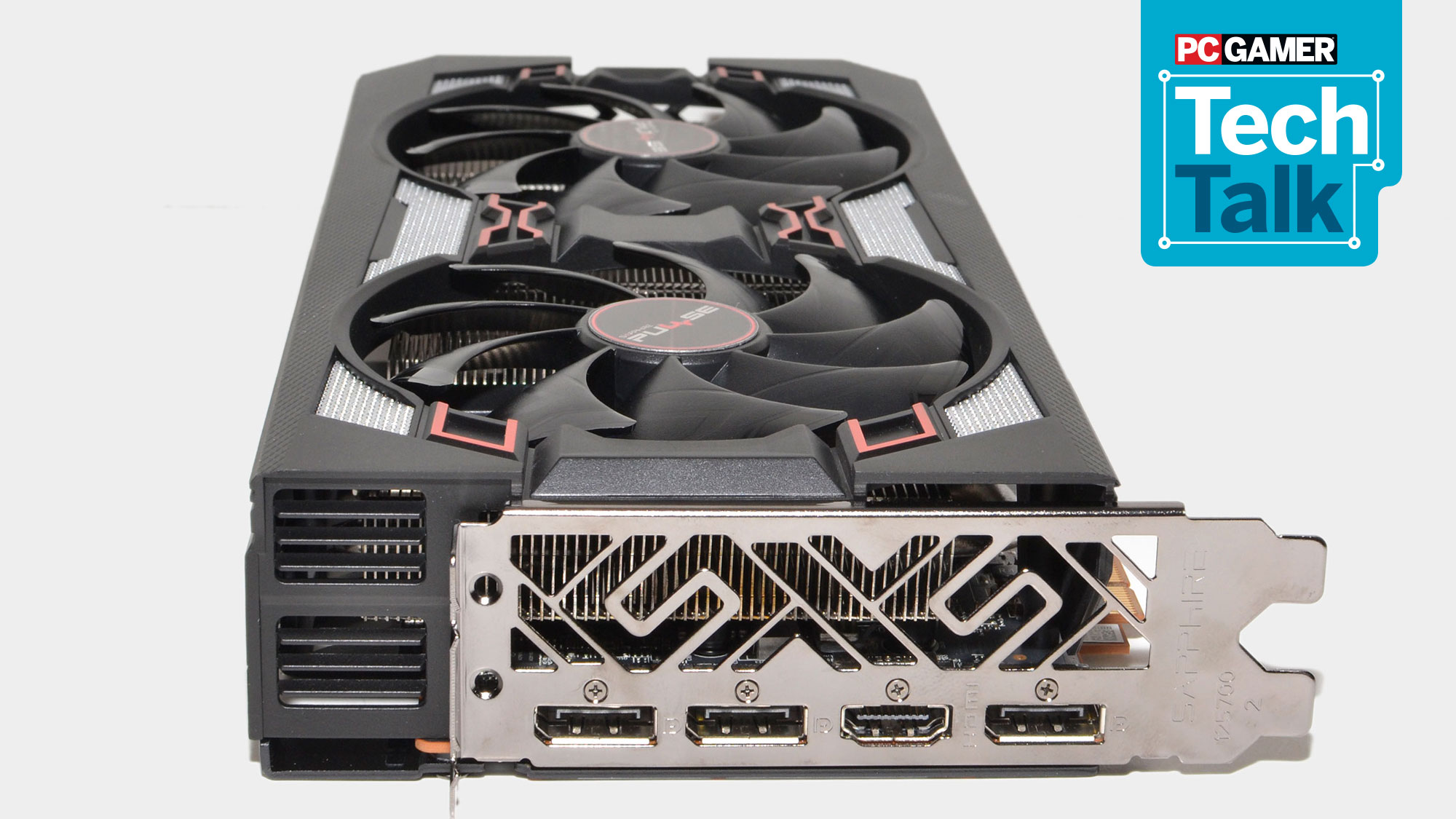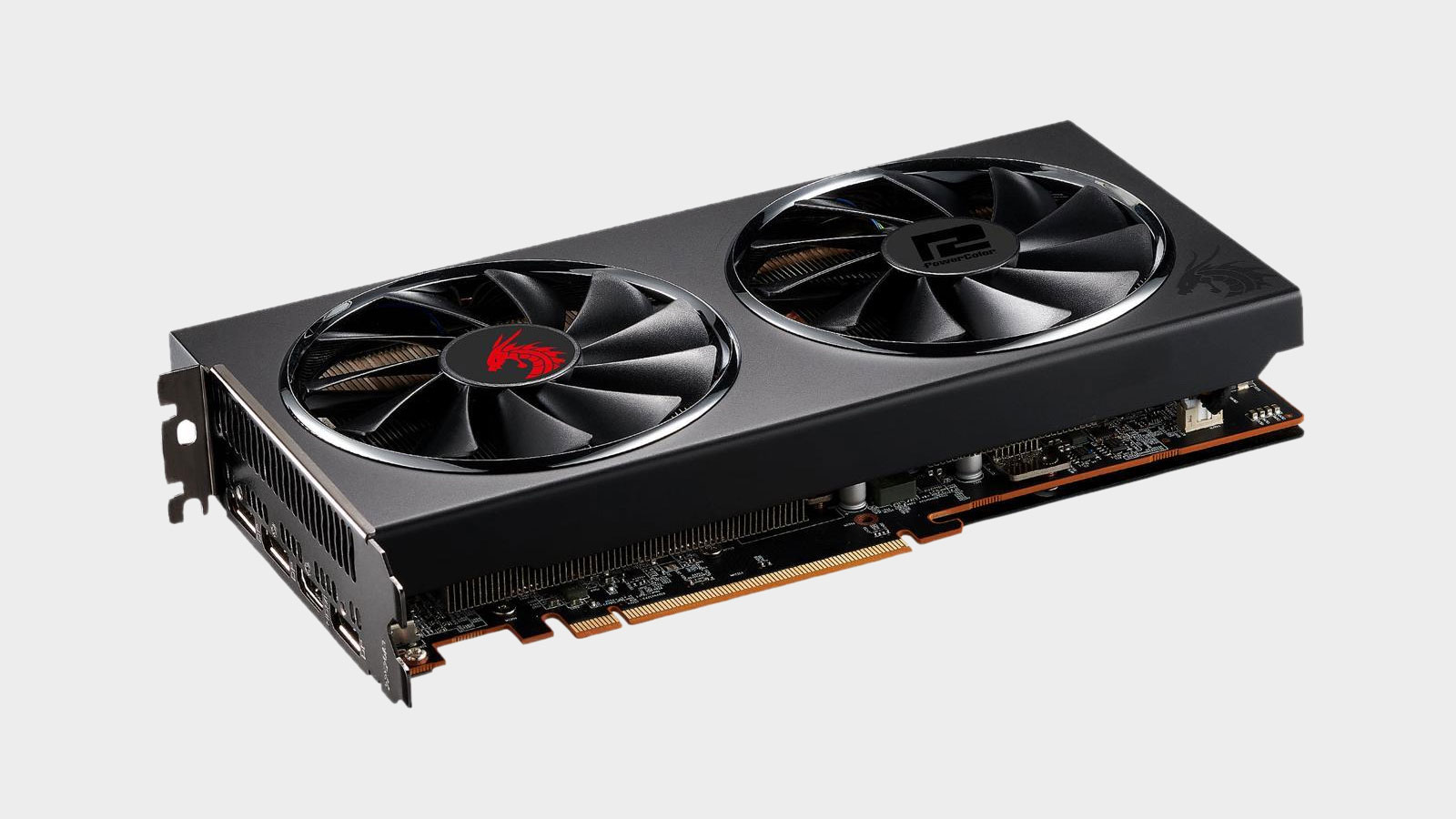AMD's last minute 5600 XT BIOS update feels like a 'bait and switch'
Will the real RX 5600 XT please stand up?

This week, AMD launched its latest graphics card, the Radeon RX 5600 XT. Prior to the retail launch, however, there was far more going on behind the scenes. AMD initially revealed the cores specs for the RX 5600 XT at CES 2020, pitching it as a superior solution to Nvidia's GTX 1660 Ti for the same $279 starting price. That's when things got messy.
To the surprise of virtually no one, Nvidia officially dropped the price on its RTX 2060 Founders Edition to $299, and EVGA also launched an RTX 2060 KO for $299—both obviously a response to AMD's upcoming RX 5600 XT. It's such an easy change to make that I'm sure AMD anticipated it might happen. The only bad part about Nvidia's announcement is that it doesn't define a universal new starting price of $299 for all RTX 2060 cards—there are still plenty of models priced at $349 or more.
If the competition is between the RX 5600 XT and GTX 1660 Ti for $279, AMD gets an easy win. If it's RX 5600 XT for $279 vs RTX 2060 Founders Edition for $349, AMD also gets a win. However, with the RTX 2060 starting at $299, things are much closer. In my testing, the RTX 2060 and RX 5600 XT are basically tied, but Nvidia has hardware support for DirectX Raytracing, while AMD doesn't even offer driver support for DXR. Overall, I give Nvidia a slight win for supporting an API that can only become more important as the next generation consoles (with ray tracing) arrive later this year.
The problem is that the benchmarks all come after an eleventh hour VBIOS (video BIOS) update to the Sapphire RX 5600 XT Pulse that I received for review. The even bigger problem is that none of the initial batch of RX 5600 XT cards will have shipped with the updated performance VBIOS applied. That means for the next six months or more, end users won't know exactly what they're getting—there's no way to know if the box you get from Amazon or Newegg or wherever is brand new with the latest BIOS, or if it's been sitting on the shelf for months.
Who gets the support call for a card that doesn't perform right? Who will provide a faster VBIOS to the consumers? Will all RX 5600 XT cards even get the new 'performance' VBIOS? How many users will botch the VBIOS update? Basically, this last-minute BIOS update is going to cause a big mess. I don't think it's good for AMD or AMD's add-in board (AIB) partners, but the AIBs will have to suck it up because what else can they do?
To answer a few of the other questions I just listed, it's the AIBs that will get the support calls from less technical users, and the AIBs and resellers that will have to deal with an increased number of returns. And every bad experience by a customer will hurt both the AIB reputation as well as AMD. The AIBs of course are responsible for providing the updated VBIOS in the first place, and I don't for a minute believe that every single RX 5600 XT model will receive the new, faster VBIOS—some cards were likely built for lower power and clockspeeds and won't handle what ends up being a decent factory overclock.
Which raises the final point: Is this last minute VBIOS update actually a form of bait and switch? Instead of 'jebaiting' Nvidia into lowering RTX 2060 prices, Nvidia has flipped the tables and jebaited AMD into releasing a VBIOS that ends up sowing confusion and problems. (For the record, I hate that 'word,' but I use it because it was AMD that talked about jebaiting Nvidia at the time of the RX 5700/5700 XT launch.) A price change is super easy to execute. Altering core specs on a product, not so much.
The biggest gaming news, reviews and hardware deals
Keep up to date with the most important stories and the best deals, as picked by the PC Gamer team.

Let's not forget the performance aspect of this either. AMD officially didn't change the reference specifications on the RX 5600 XT GPU. It still has a Game Clock of 1375MHz, Boost Clock of 1560MHz, and 12Gbps GDDR6 memory. The Sapphire RX 5600 XT Pulse I tested, meanwhile, has a Game Clock of 1615MHz and a Boost Clock of 1750MHz, plus 14Gbps GDDR6. Compared to 'stock,' that's a 12 percent GPU overclock and a 17 percent VRAM overclock—far from insignificant. The reference RX 5600 XT Sapphire card I tested is at least 10 percent slower.
That's where I start to get this bait and switch feeling. Legally, no, AMD didn't break any rules, but it's more than a little frustrating to have performance results that represent a heavily overclocked card, going up against reference clocked models in many of the reviews you'll have seen around the web. I erred on the side of higher performance being good, but it could have gone the other way and tanked a review based on last minute shenanigans.
How does the Sapphire RX 5600 XT Pulse, with an updated VBIOS, fare against the RTX 2060 Founders Edition? It does quite well, basically matching the level of performance on average with a slightly lower price tag and slightly lower power use—and yes, after the updated VBIOS, the Sapphire card still tends to draw a bit less power than the RTX 2060. TSMC's 7nm is actually pretty great in that respect.
The more important question for customers will be how the specific card they buy stacks up against alternative cards, and the price they have to pay. You want a $280 RX 5600 XT card? This PowerColor model will get you exactly that—but it ships with 12Gbps GDDR6 and a 1620MHz Boost Clock, and I don't know if PowerColor will actually provide an updated VBIOS. From what I can tell, the answer is no: the Red Devil and Red Dragon models have a faster VBIOS available, but the basic 5600 XT card (model AXRX 5600XT 6GBD6-3DH/OC) does not. And I'm not trying to pick on PowerColor in particular; the same thing will likely happen with other vendors as well.

It's important to understand that I'm not saying you shouldn't buy an RX 5600 XT if that's the card you want. Even if you have to update the VBIOS, it's not that difficult. Just keep everyone away from the power button and follow the instructions. Many cards even include dual BIOS chips with a switch, meaning if something does go wrong, you have a fallback to the original BIOS. And if this paragraph has you scratching your head wondering what I'm talking about, then yeah, maybe you actually shouldn't buy the RX 5600 XT right now.
This is why product specs are usually known months in advance. Last minute updates create a host of problems. Changing a price, like AMD did with the RX 5700 and 5700 XT launch, is easy. Requiring new firmware is a massive headache and usually indicates something went wrong with the launch. But of course, AMD didn't change the specs of the RX 5600 XT—it's only the good RX 5600 XT cards that were updated.
Bottom line: Make sure you know what sort of RX 5600 XT card you're buying, especially if you want the 'full' experience. Also keep in mind that factory overclocked RTX 2060 cards are going to be about 5 percent faster than the reference Founders Edition, which means if you compare a reference RX 5600 XT to a factory overclocked card like the EVGA RTX 2060 KO, the Nvidia card could end up leading by 10-15 percent on average. It's why I try to compare reference performance whenever possible, but when true reference cards don't exist, things get a bit messy. Basically, look at clockspeeds on both the GPU and GDDR6. If you want the 'good' RX 5600 XT cards, get one with 14Gbps GDDR6.
Jarred's love of computers dates back to the dark ages when his dad brought home a DOS 2.3 PC and he left his C-64 behind. He eventually built his first custom PC in 1990 with a 286 12MHz, only to discover it was already woefully outdated when Wing Commander was released a few months later. He holds a BS in Computer Science from Brigham Young University and has been working as a tech journalist since 2004, writing for AnandTech, Maximum PC, and PC Gamer. From the first S3 Virge '3D decelerators' to today's GPUs, Jarred keeps up with all the latest graphics trends and is the one to ask about game performance.


